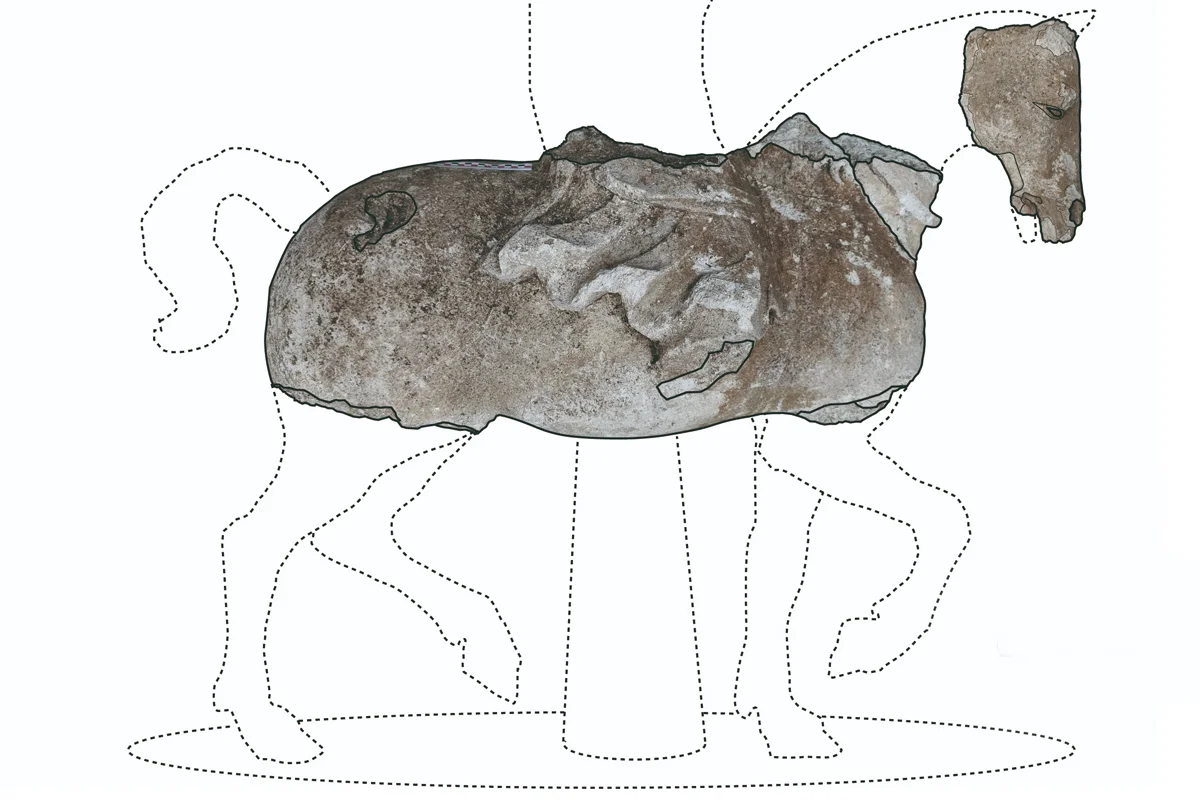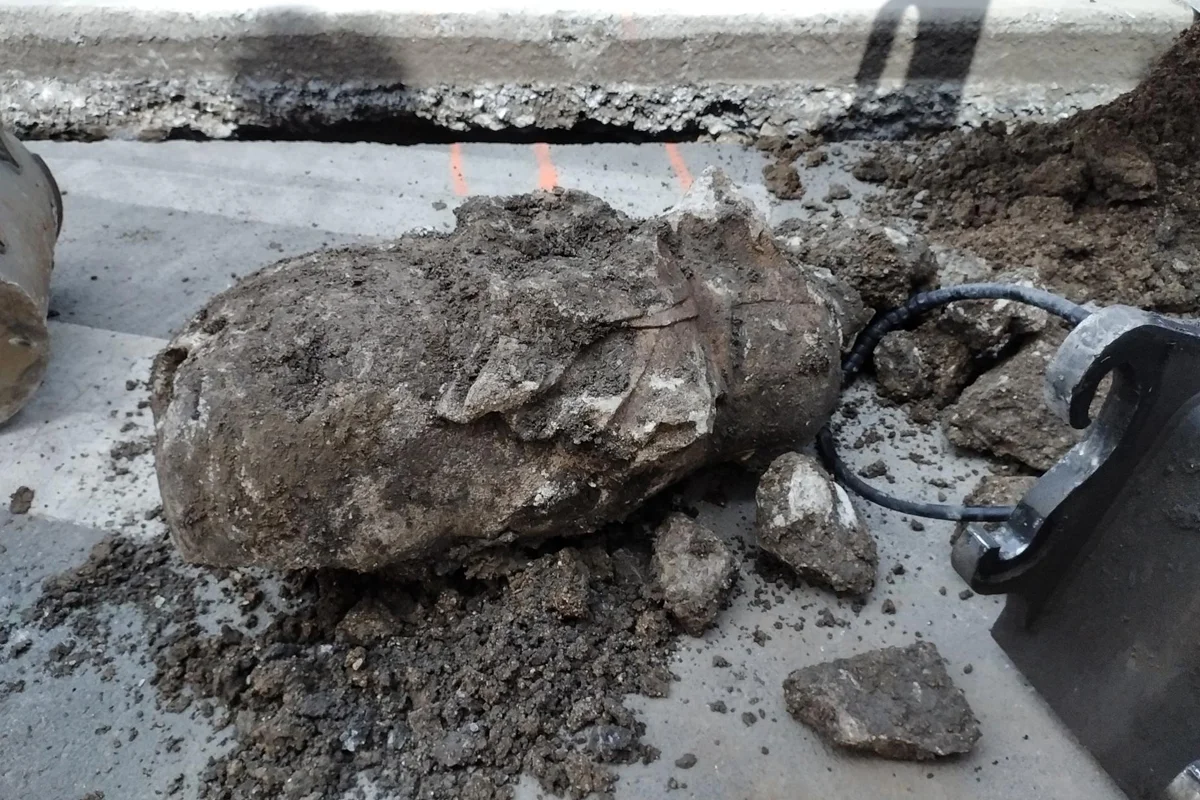Archaeologists from the National Institute for Preventive Archaeological Research (Inrap) have discovered an equestrian sculpture during excavations in Toul, France.
The discovery was made while conducting a study of the former medieval city gate, known historically as La Place (Portae platae).
The gate was demolished shortly after 1700 during fortification works overseen by Sébastien Le Prestre de Vauban, the renowned military engineer of King Louis XIV. Vauban replaced the Medieval defences with ramparts built of dressed white stone that reach a height of up to five metres.
Excavations identified not only the medieval gate structure but also a deep pit near its entrance. The pit was found to contain earth and rubble, but also the unexpected discovery of a large equestrian sculpture.

The sculpture is carved from white shell limestone and depicts a figure riding on horseback in a classical Roman style. According to experts, the limestone was likely sourced from the Barrois region, a “pays” in the former Duchy of Bar, and shares similarities with the quattrocento influences of Naples, Florence, and Milan.
It is likely that the sculpture was commissioned by a prominent figure such as King Henry II of France or John III of Lorraine, reflecting the tastes of Renaissance patrons who sought to emulate classical antiquity in art.
Inrap suggest that the sculpture likely stood in a niche above the city gate, serving both as decoration and political statement until it was buried following the gate’s destructions to erase a symbol of aristocratic power during the French Revolution.
“A reassembly of its 27 broken elements and a stylistic analysis are in progress. A 3D photogrammetry acquisition will soon be carried out to facilitate its study and its museographic restitution,” said Inrap.
Header Image Credit : Inrap
Sources : Inrap





